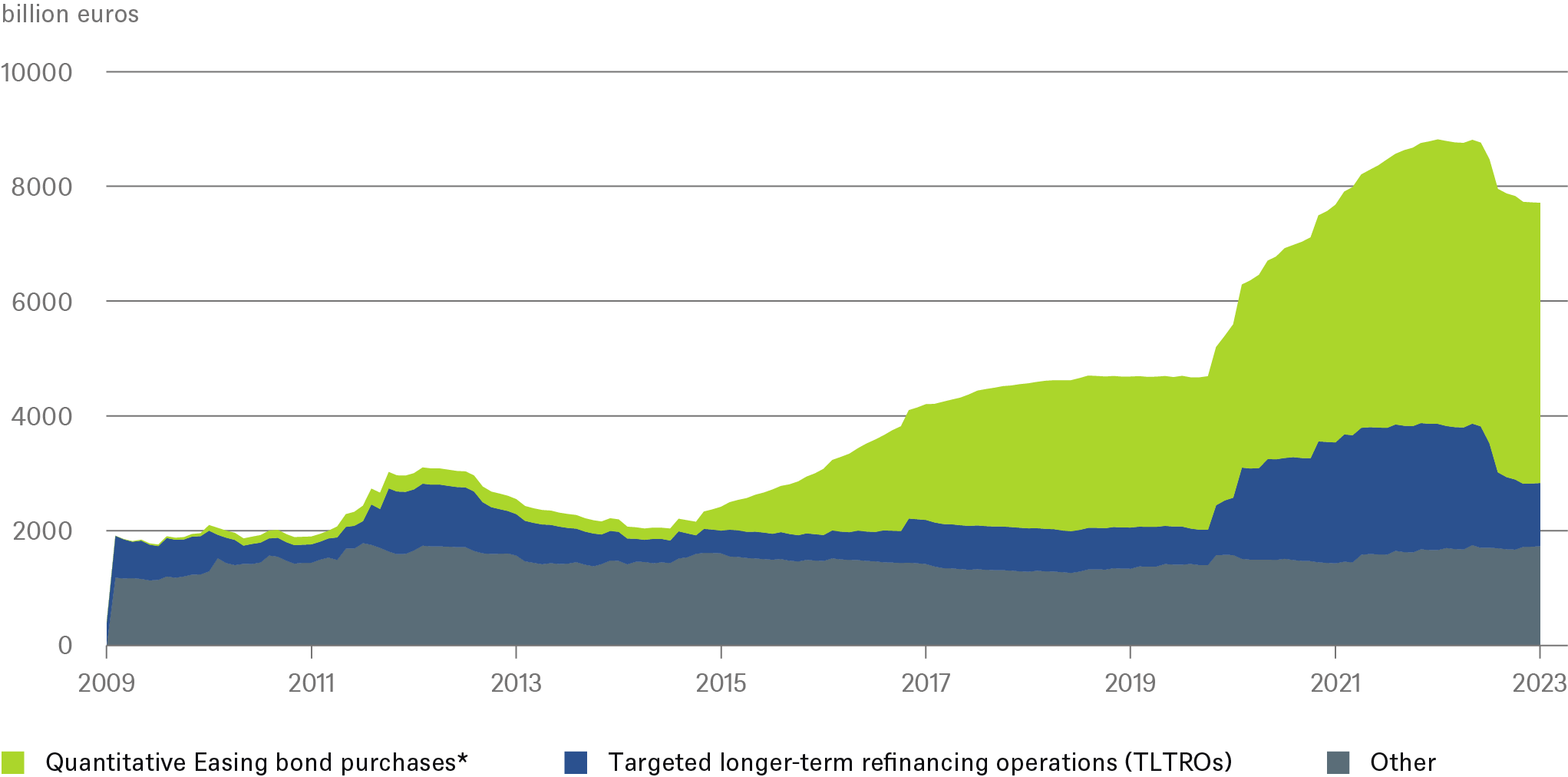- Home »
- Insights »
- CIO View »
- Chart of the Week »
- ECB balance sheet falls but no one may notice
Since the liquidity injections by central banks during the 2008 financial crisis, it has become common practice among market observers to link the size of central bank balance sheets with the position of the financial markets. If one plots the price trend of the S&P 500 against the change in the Federal Reserve (Fed) balance sheet over the past three years, for example, the two correlate quite nicely. The correlation works too for the market‘s recovery after the U.S. banking quake in March, which the Fed also treated with some splashes of liquidity. But the measurement works only if the balance sheet is adjusted to take liquidity changes from the quantitative easing programs into account. The correlation coefficient of 0.9 is strong but as usual, one should not confuse correlation with causality.
Nor is the ECB's balance sheet homogeneous. As our Chart of the Week shows, it grew most as a result of open market purchases of bonds starting in 2015, to keep the funding costs of peripheral countries in check. To this day, these purchases account for nearly two-thirds of the ECB's balance sheet. But the more powerful tool to deal rapidly with crises is to provide liquidity to commercial banks so that they, in turn, can continue to provide money and credit to businesses and households.
The ECB’s balance sheet is shrinking, thanks exclusively to expiring TLTROs

* Pandemic emergency purchase programme (PEPP) / asset purchase programme (APP)
Sources: European Central Bank (ECB), Haver Analytics Inc, DWS Investment GmbH as of 6/19/23
In Europe, the most common instruments for this have been Targeted Longer-Term Refinancing Operations (TLTROs). At their peak, in June 2021, they reached 2.22 trillion euros. Most recently, they were only half that amount; and in all likelihood, next Wednesday, June 28, they will be almost half a trillion euros less. That's when the remaining 477 billion euros[1]from the largest TLTRO tranche to date expire – the 1.3 trillion euros from June 2020 that were originally made available to banks at a negative interest rate of 1%. When these have been repaid, the balance sheet will have shrunk by 17% from its peak in May 2022. After another large tranche matures in June 2024, TLTROs will then play little role in the ECB’s balance sheet. For commercial banks, however, this will also end their ability to refinance under the same, favorable conditions.
If the markets digest the large drop in liquidity on Wednesday well, which we assume they will, further withdrawals of liquidity will take place in comparatively homeopathic doses. Then the focus will shift to the ECB's nearly 5 trillion-euro bond portfolio. For the time being, the ECB is not expected to sell bonds directly on the market. The decline will therefore take place exclusively via maturing bonds. On average over the next twelve months, this will amount to around 28 billion euros per month. We would prefer not to get carried away with statements on the extent to which this will correlate with the price performance of European stock and bond indices. Ceteris paribus, however, balance sheet reduction will be a headwind for the markets. It might not be too stern a wind, however – perhaps no more than a breeze.




